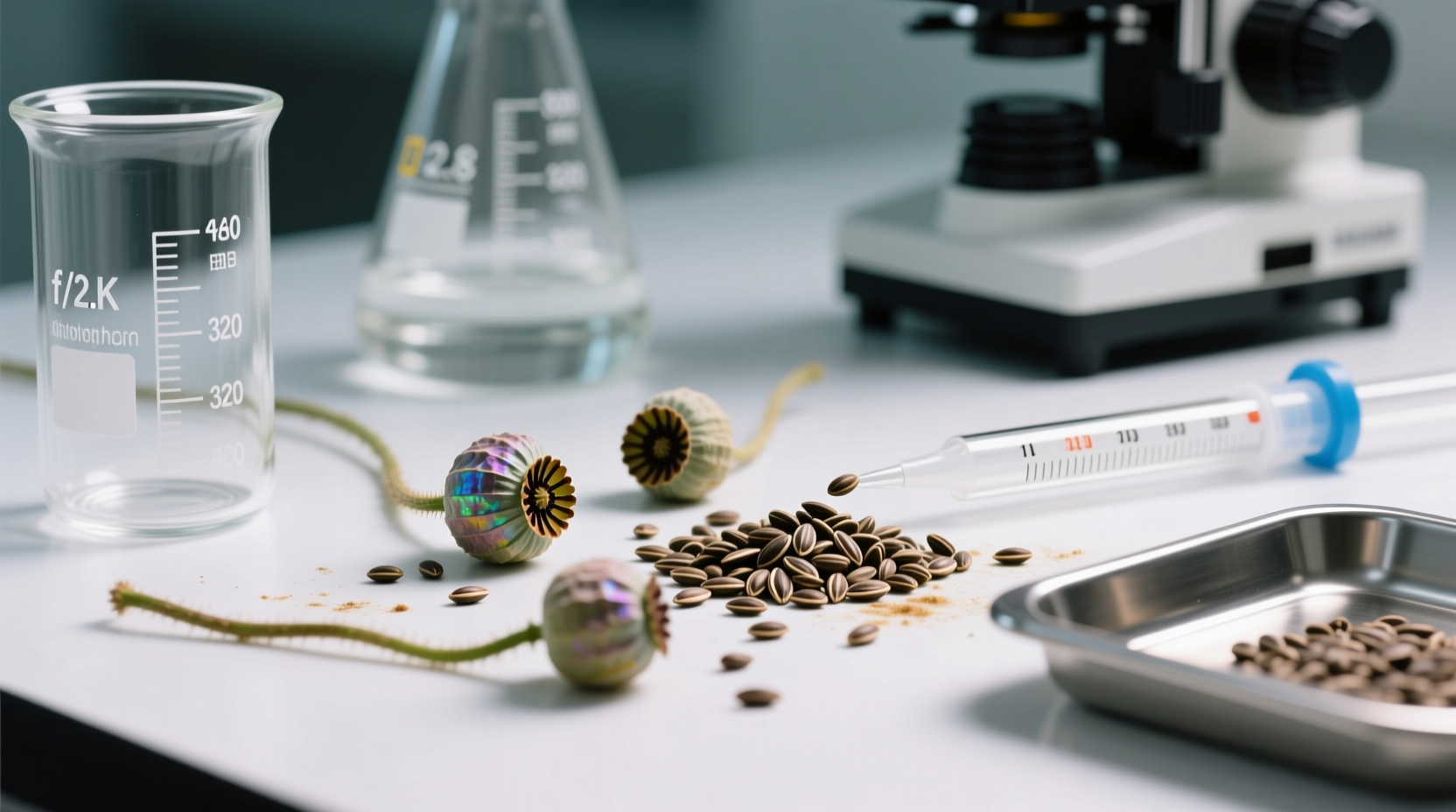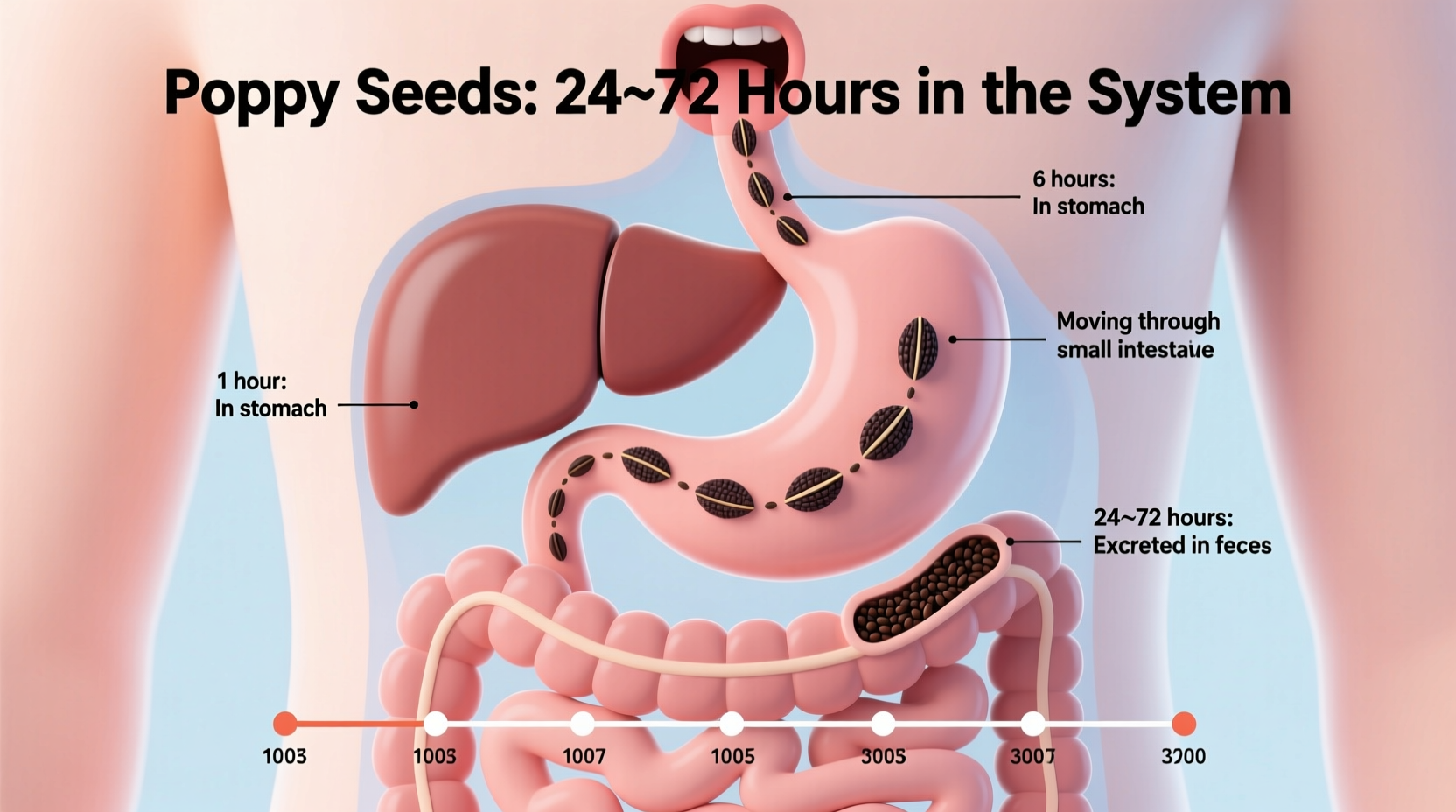Have you eaten a poppy seed bagel before a drug test and now worry about false positives? You're not alone. Understanding exactly how long poppy seeds stay in your system could prevent unnecessary career or legal complications. This guide delivers science-backed timelines so you can make informed decisions about poppy seed consumption before mandatory screenings.
The Science Behind Poppy Seeds and Drug Tests
Poppy seeds naturally contain trace amounts of morphine and codeine from the Papaver somniferum plant. When consumed, these compounds metabolize into detectable opiates. The U.S. Food and Drug Administration (FDA) confirms that even small amounts—like those in a single bagel—can produce positive results on standard immunoassay drug screens.
"Many people don't realize that the poppy seeds on their morning muffin contain the same compounds tested for in workplace screenings," explains Dr. Rebecca Torres, a forensic toxicologist at the National Institute on Drug Abuse. "The concentration varies significantly based on growing conditions and processing methods." 
Detection Timelines by Test Type
Your risk of a false positive depends primarily on which drug testing method your employer or agency uses. Here's what current research shows:
| Test Type | Standard Detection Window | Extended Detection Possible? | Sensitivity Threshold |
|---|---|---|---|
| Urine Test | 12-48 hours | Up to 3 days with high consumption | 300 ng/mL (SAMHSA-5 standard) |
| Blood Test | 6-24 hours | Rarely beyond 24 hours | 2-10 ng/mL |
| Saliva Test | 1-2 days | Maximum 48 hours | 1 ng/mL |
| Hair Follicle | Up to 90 days | Only with chronic heavy use | 1 pg/mg |
This comparative data comes from the Substance Abuse and Mental Health Services Administration's 2024 testing guidelines, which establish the standard cutoff levels used in 95% of U.S. workplace screenings.
Factors That Extend Detection Time
Several variables influence how long poppy seeds stay detectable in your system. Understanding these can help assess your personal risk:
- Consumption amount: A single bagel typically clears in 24 hours, while poppy seed oil or concentrated extracts may extend detection to 72 hours
- Metabolism rate: Individuals with slower metabolic rates may test positive up to 50% longer
- Hydration levels: Dehydration concentrates urine, increasing detection likelihood
- Body mass index: Higher BMI correlates with slightly extended detection windows
- Test sensitivity: Some labs use lower cutoff levels (100 ng/mL) that detect smaller traces
When False Positives Are Most Likely
Not all poppy seed consumption leads to positive tests. Research from the Journal of Analytical Toxicology shows false positives occur primarily under specific conditions:
| Consumption Scenario | Positive Test Probability | Recommended Precaution |
|---|---|---|
| One poppy seed bagel/muffin | 15-25% | Avoid 48 hours before testing |
| Two+ servings in 24 hours | 60-75% | Avoid 72+ hours before testing |
| Poppy seed oil or extract | 85-95% | Avoid 5-7 days before testing |
| Traditional poppy seed dishes (e.g., Polish mazurek) | 40-60% | Avoid 48-72 hours before testing |
What to Do If You Get a False Positive
If your test comes back positive after poppy seed consumption, follow these evidence-based steps:
- Request confirmation testing: Standard immunoassay screens have high false positive rates. Gas chromatography-mass spectrometry (GC-MS) provides definitive results with near-zero false positives
- Document your consumption: Keep receipts or food logs showing poppy seed intake within the detection window
- Provide reference materials: Share FDA guidance documents about poppy seed effects with the Medical Review Officer
- Understand your rights: Most employers must follow SAMHSA guidelines that require confirmation testing before taking adverse action
The American Association for Clinical Chemistry confirms that poppy seeds do not produce the same metabolite ratios as illicit opiates. Confirmation testing can distinguish between poppy seed consumption and actual opiate use with 99.8% accuracy.
Practical Prevention Strategies
For those facing mandatory drug testing, these science-backed approaches minimize risk:
- Timing matters: Avoid all poppy seed products for at least 48 hours before testing (72 hours for hair follicle tests)
- Know your source: Seeds from Turkish or Indian varieties contain higher morphine levels than European varieties
- Washing doesn't help: FDA research shows washing seeds removes less than 10% of alkaloid content
- Choose alternatives: Use sesame or sunflower seeds in recipes when drug testing is imminent
"I've seen dozens of cases where patients panicked after positive tests from bakery items," says Dr. Torres. "The key is understanding that confirmation testing exists specifically to address this common issue. Most false positives get resolved within 72 hours with proper documentation."











 浙公网安备
33010002000092号
浙公网安备
33010002000092号 浙B2-20120091-4
浙B2-20120091-4